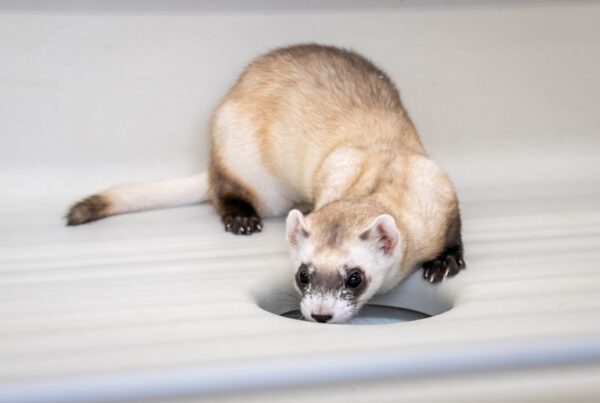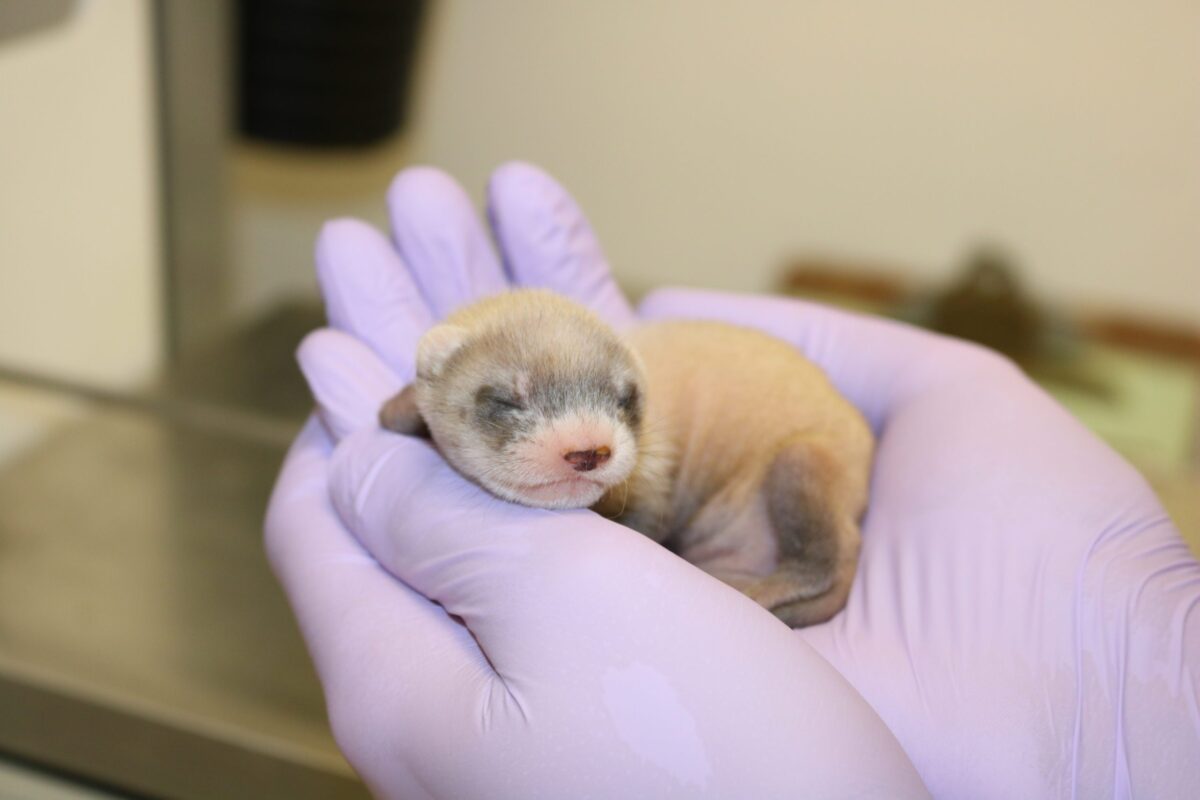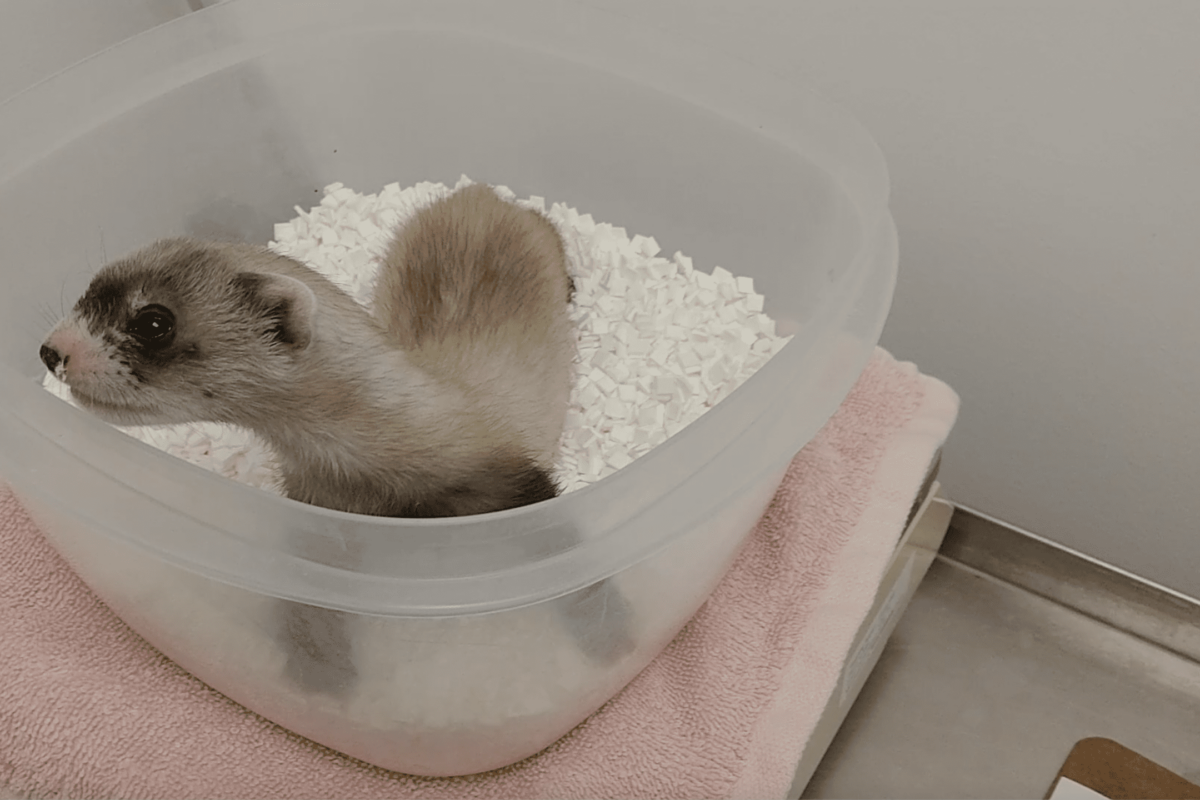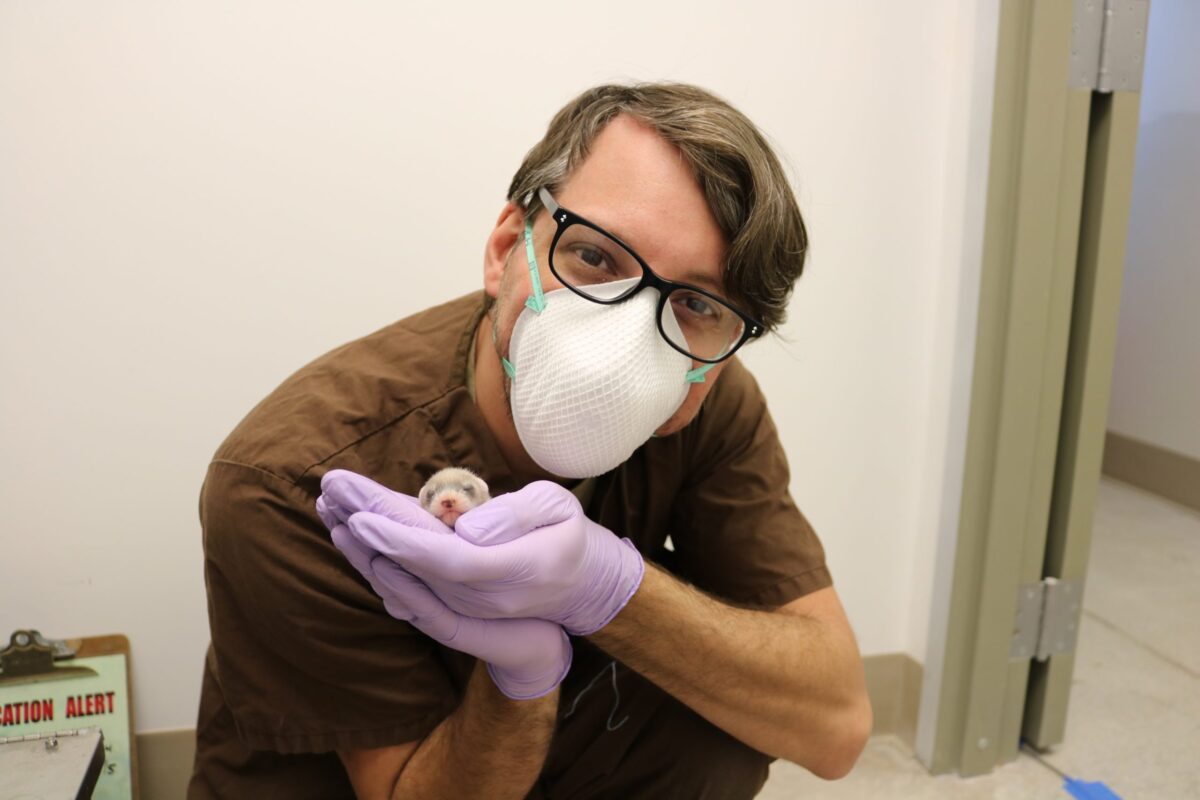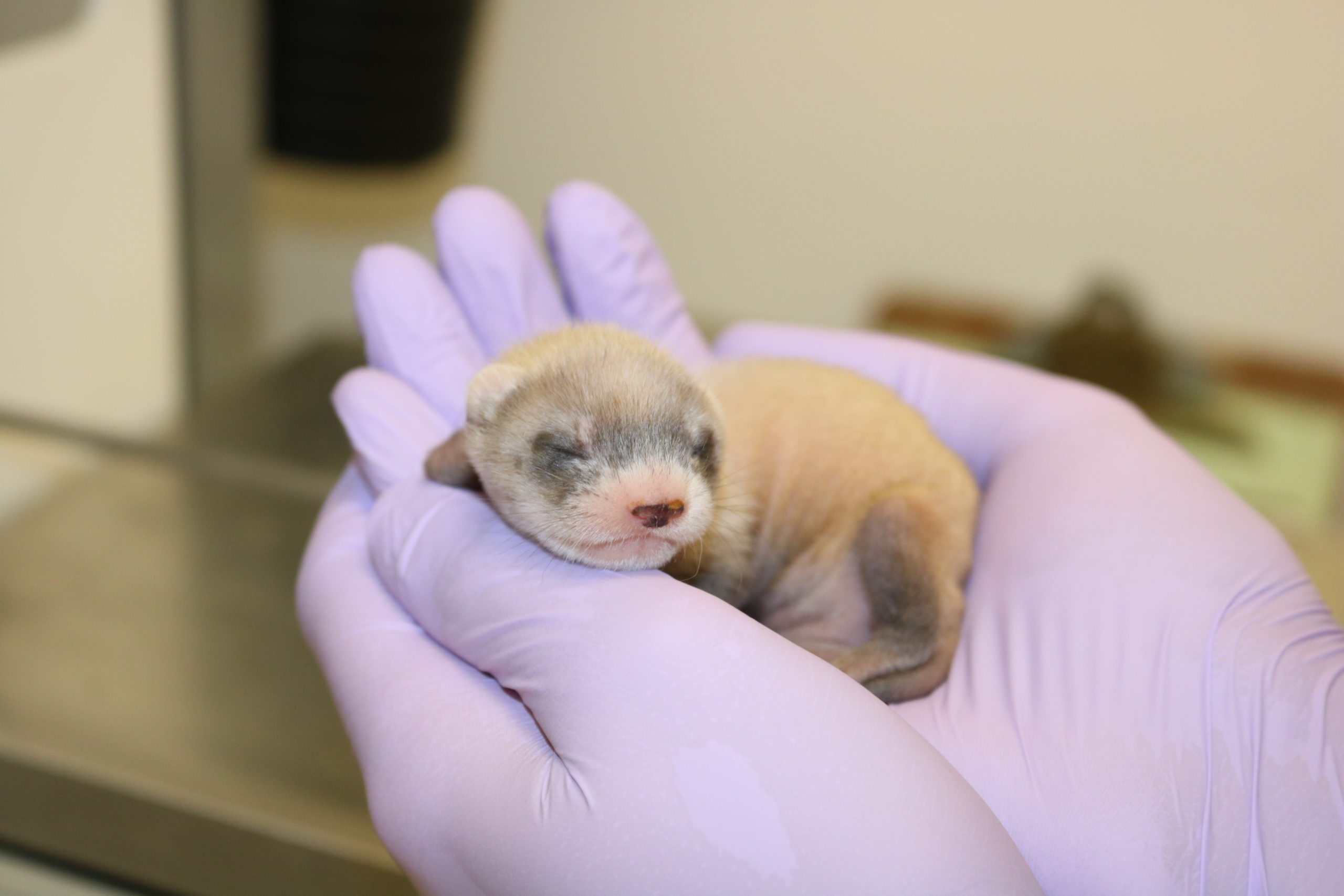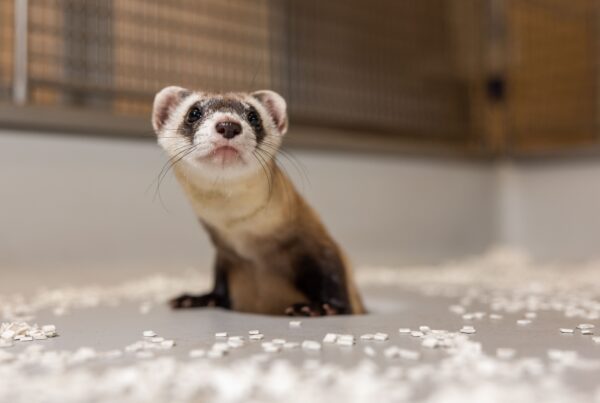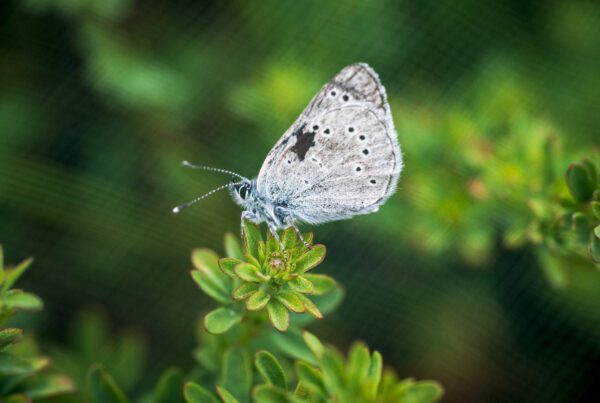Innovative Genetic Research Boosts Black-footed Ferret Conservation Efforts by USFWS and Partners
A scientific breakthrough from a partnership of leading innovators in conservation, genetic research, and the protection of endangered species
DENVER, CO — Black-footed ferret recovery efforts aimed at increased genetic diversity and disease resistance took a bold step forward Dec. 10, 2020, with the birth of “Elizabeth Ann,” created from the frozen cells of “Willa,” a black-footed ferret that lived more than 30 years ago. The groundbreaking effort to explore solutions to help recover this endangered species results from an innovative partnership among the U.S. Fish and Wildlife Service and species recovery partners and scientists at Revive & Restore, ViaGen Pets & Equine, San Diego Zoo Global, and the Association of Zoos and Aquariums.
“The Service sought the expertise of valued recovery partners to help us explore how we might overcome genetic limitations hampering recovery of the black-footed ferret, and we’re proud to make this announcement today,” said Noreen Walsh, Director of the Service’s Mountain-Prairie Region, where the Service’s National Black-footed Ferret Conservation Center is located. “Although this research is preliminary, it is the first cloning of a native endangered species in North America, and it provides a promising tool for continued efforts to conserve the black-footed ferret.”
“Maintaining and increasing wild populations and suitable habitat continues to be essential for black-footed ferret recovery and will remain a priority for the Service,” Walsh continued. “Successful genetic cloning does not diminish the importance of addressing habitat-based threats to the species or the Service’s focus on addressing habitat conservation and management to recover black-footed ferrets.”
Today, all black-footed ferrets are descended from seven individuals, resulting in unique genetic challenges to recovering this species. Cloning may help address significant genetic diversity and disease resilience barriers to support habitat conservation and reestablishment of additional populations in the wild. Without an appropriate amount of genetic diversity, a species often becomes more susceptible to diseases and genetic abnormalities, as well as limited adaptability to conditions in the wild and a decreased fertility rate. Limited genetic diversity makes it extremely difficult to fully recover a species.
This effort is consistent with the Service’s black-footed ferret recovery plan, which addresses the use of various assisted reproductive techniques. It also encourages the incorporation of any newly discovered black-footed ferrets into the current captive population and the use of these genetic materials to maximize genetic diversity.
Once thought to be extinct and currently listed as an endangered species, black-footed ferrets were brought back from nearly vanishing forever by the Service and its partners after a Wyoming rancher discovered a small population on his land in 1981. Ferrets from this population were captured by the Wyoming Game & Fish Department and others to begin a captive breeding program to recover the species.
This small number of individuals has put limitations on the species’ genetic diversity, creating challenges for resiliency to changing environments and emerging disease threats. Willa, a black-footed ferret captured among the last wild individuals, has no living descendants and is therefore not one of the seven founders. The Wyoming Game & Fish Department had the foresight to preserve her genes and sent tissue samples from Willa to San Diego Zoo Global’s Frozen Zoo in 1988. The Frozen Zoo established a cell culture and stewarded these precious frozen cells ever since, making today’s achievement possible.
“San Diego Zoo Global’s Frozen Zoo was created more than 40 years ago with the hope that it would provide solutions to future conservation challenges,” said Oliver Ryder, Director of Conservation Genetics, San Diego Zoo Global. “We are delighted that we have been able to cryobank and, years later, provide viable cell cultures for this groundbreaking project.”
A genomic study revealed Willa’s genome possessed three times more unique variations than the living population. Therefore, if Elizabeth Ann successfully mates and reproduces, she could provide unique genetic diversity to the species.
“We’ve come a long way since 2013 when we began the funding, permitting, design and development of this project with the U.S. Fish and Wildlife Service. Genomics revealed the genetic value that Willa could bring to her species,” said Ryan Phelan, Revive & Restore Executive Director. “But it was a commitment to seeing this species survive that has led to the successful birth of Elizabeth Ann. To see her now thriving ushers in a new era for her species and for conservation-dependent species everywhere. She is a win for biodiversity and for genetic rescue.”
In 2018, the Service issued the first-ever recovery permit for cloning research of an endangered species, allowing Revive & Restore to initiate genetic analyses and proof of concept trials. This work builds upon recent advancements in cloning processes developed by ViaGen Pets & Equine, which successfully created embryos from the frozen cell line and implanted them into a domestic ferret surrogate.
“The ability to utilize our proven Somatic Cell Nuclear Technology to enable the cloning of such an ecologically important species is a great privilege,” said ViaGen Pets and Equine President Blake Russell. The surrogate mother was transferred from ViaGen Pets & Equine to the Service’s National Black-Footed Ferret Conservation Center (NBFFCC) mid-gestation to give birth to the cloned kit under the Service’s authority. The NBFFCC staff’s extensive experience breeding and caring for black-footed ferrets ensured the safe arrival of the first U.S. endangered species clone. This research is still in the early stages, and researchers continue to closely monitor the young kit for viability and other developments. Elizabeth Ann and her surrogate mother are kept separate from other breeding black-footed ferrets, and she will live her life at the NBFFCC as additional research is completed. The team is working to produce more black-footed ferret clones in the coming months as part of continuing research efforts.
“Zoos accredited by the Association of Zoos and Aquariums, like San Diego Zoo, have worked for decades with the U.S. Fish and Wildlife Service to breed and reintroduce black-footed ferrets,” said Dan Ashe, President and CEO of the Association of Zoos and Aquariums. “Today’s news is another exciting step in this inspiring recovery story, and AZA looks forward to more successful cooperation with the Service through its Saving Animals From Extinction (SAFE) program.”
Cloning for conservation: Elizabeth Ann at age three weeks. She is held by Revive & Restore’s Lead Scientist Ben Novak. Credit: Revive & Restore
About the U.S. Fish and Wildlife Service
The U.S. Fish and Wildlife Service works with others to conserve, protect, and enhance fish, wildlife, plants, and their habitats for the continuing benefit of the American people. For more information, visit www.fws.gov and connect with us on social media: Facebook, Instagram, X (formerly known as Twitter), LinkedIn, Flickr, and YouTube.
About Revive & Restore
Revive & Restore is the leading wildlife conservation organization promoting the incorporation of biotechnologies into standard conservation practice. The Sausalito, California nonprofit was formed in 2012 with the idea that 21st century biotechnology can and should be used to enhance genetic diversity, build disease resistance, and facilitate adaptation. Its mission is to enhance biodiversity through the genetic rescue of endangered and extinct species.
About ViaGen Pets & Equine
ViaGen Pets and Equine is the worldwide leader in cloning the animals we love. For over 20 years, we have been committed to the health and well–being of every animal we work with. Our team includes leading scientists, and we believe that moving the promising and exciting area of animal genetic research forward will benefit all animals.
About San Diego Zoo Wildlife Alliance
San Diego Zoo Wildlife Alliance is a nonprofit international conservation leader, committed to inspiring a passion for nature and working toward a world where all life thrives. The Alliance empowers people from around the globe to support their mission to conserve wildlife through innovation and partnerships. San Diego Zoo Wildlife Alliance supports cutting–edge conservation and brings the stories of their work back to the San Diego Zoo and San Diego Zoo Safari Park—giving millions of guests, in person and virtually, the opportunity to experience conservation in action.
More posts in News & Media
